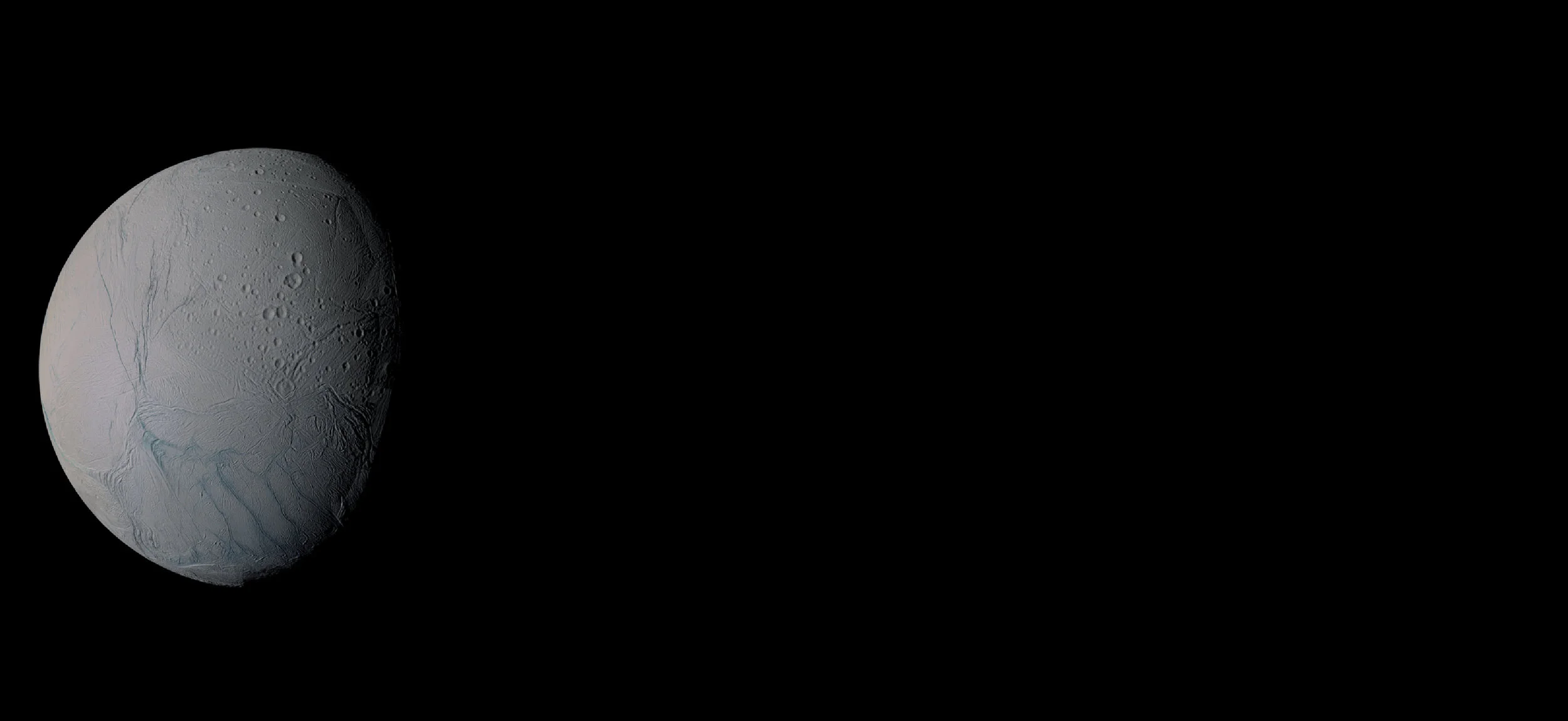Caltech Space Challenge 2019
"Beyond Earth, are there contemporary habitats elsewhere in the universe with necessary conditions to sustain life and do organisms live there now? [Planetary Science Decadal Survey 2011]" This question has intrigued mankind for centuries yet the answer remains unknown up to the present day. It is therefore not surprising that the most recent planetary science decadal survey lists the search for life in our own solar system among the key scientific questions for space missions in the near future.
Geyser-like jets in the south polar region of Enceladus vent ice particles and gases into space, as seen in this image captured by the Cassini spacecraft. Image credit: NASA / JPL / Space Science Institute
While in the early days of solar system exploration we hoped to find clues to the question of extraterrestrial life within the habitable zone, recent discoveries of internal heating due to tidal effects have shifted our attention to the satellites of gas giants in the outer solar system like Jupiter and Saturn. In particular, Cassini discovered that an object initially thought to be a dead body is one of the most likely harbors of contemporary extraterrestrial life: Saturn's moon Enceladus. Cassini's measurements not only reported evidence for a differentiated interior structure with a subsurface water ocean possibly in contact with the rocky core, it also discovered geyser-like jets in the south polar region of Enceladus, dubbed Tiger Stripes. These jets vent water vapor and solid material from the interior ocean into space. During close flybys Cassini's mass spectrometer detected complex organic compounds contained in the plumes. This finding fueled speculations about the presence of life in Enceladus' subsurface ocean, but Cassini's instrumentation was not designed to detect life, leaving this significant question to be answered by follow-on missions.
Ideally, probing Enceladus for the presence of life means accessing not only its plumes, but also the most likely location of indicative biomolecules: the surface orifices of its geysers, located in the south polar Tiger Stripe region. Given the incomplete knowledge of Enceladus' surface and its geysers, a classic single-lander mission is too risky. But, what if the risk could be spread among multiple small, cost-effective landers? This will be the guiding question of the 2019 Caltech Space Challenge. In response, participants will create a novel mission design to probe for evidence of the presence of life on Enceladus using a network of small landers.
Example of a small and cost effective rover: NASA JPL's PUFFER. Image credit: NASA / JPL-Caltech
Participants of the 2017 Caltech Space Challenge on the JPL tour.
The Caltech Space Challenge is a unique event designed to build technical and teamwork skills and help inspire the next generation of aerospace leaders by tackling current challenges in space exploration. We will select thirty-two individuals from a large pool of talented and motivated undergraduate and graduate students in a wide range of fields representing engineering, science, business, graphical design, and others. Invited participants will come to Caltech during spring break 2019 and join one of two sixteen-member teams. Teams have just five days to design their mission from scratch to final proposal. Both teams benefit from working under the mentorship of experienced engineers and managers from NASA's Jet Propulsion Laboratory (JPL) and private industry. Additionally, throughout the week leaders from the aerospace sector hold lectures to help students contextualize and solve different aspects of their missions. Finally, at the end of the week a panel of judges from industry, government, and academia selects the winning proposal based on technical merit, innovation, and presentation.
The Caltech Space Challenge was started in 2011 by Caltech graduate students Prakhar Mehrotra and Jonathan Mihaly and was hosted by the Keck Institute for Space Studies (KISS) and the Graduate Aerospace Laboratories at Caltech (GALCIT). Participants of the 2011 challenge designed a crewed mission to a Near-Earth Object (NEO). The second edition of the Caltech Space Challenge, held in 2013, developed a crewed mission to a Martian moon. In 2015, participants of the third Caltech Space Challenge were asked to design a mission that would land humans on an asteroid brought into Lunar orbit, extract the asteroid’s resources and demonstrate their use. The fourth edition, held in 2017, challenged participants with the design of Lunarport, a launch and supply station on the Moon for deep space missions.













